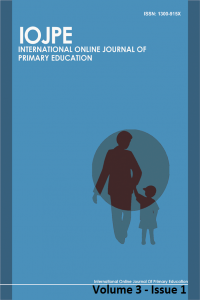Abstract
This study employed a mixed method, comprising of qualitative and quantitative research methods to examine the effectiveness of hands-on experiments in learning Science among twenty two Year 4 students in an international school. The study focused on two important areas which are to evaluate the students’ academic development and to identify students’ intrinsic motivation to learnScience when the subject is taught using hands-on experiments. The findings indicated that a number of students obtained better results as they learnt and remembered better through hands-on experiments. There was generally a higher level of participation and intrinsic motivation shown in the students when they learnt through hands-on experiments. The researchers are of the opinion that Kolb’s experiential theory is very effective when doing the hands-on experiments for it ensures students grasp knowledge taught effectively. It is recommended that further studies on Bruner’s theory of instruction should be carried out to further enhance the effectiveness of learning Science.
References
- Allen, L. (1973). An examination of the ability of third grade children from the science curriculum improvement study to identify experimental variables and to recognize change.Science Education, 57 (1), 123–151.
- Andersen, P., &Vandehey, M. (2012).Career counseling and development.2nd edition, United States of America: Brooks/Cole.
- Blandford, S., & Knowles, C. (2009).Developing professional practice 0-7. England: Pearson Education Limited.
- Brophy, J. (2010). Motivating students to learn. 3rd edition, United Kingdom: Routledge.
- Bruner, J. (1960). The Process of Education. Cambridge, MA: Harvard University Press.
- Carin, A., & Bass, J. E. (2001).Teaching science as inquiry. 9th edition, New Jersey: Prentice-Hall, Inc.
- Cowan, J. (1988). On becoming an innovative university teacher: reflection in action. UK: Open University.
- Federal Aviation Administration, (2009).Aviation instructor’s handbook. New York: Skyhourse Publishing, Inc.
- Fielding, M. (1994). Valuing difference in teachers and learners: Building on Kolb’s learning styles to develop a language of teaching and learning. Curriculum Journal, 5(3) 393-417.
- Ghartey-Ampiah, J., Tufuor, J. K., &Gadzekpo, V. P. Y. (2004) Teachers’ views on the role of science practical activities in the teaching of science in ghanaian senior secondary schools. African Journal of Educational Studies in Mathematics and Sciences, 2 (2) 1-9.
- Ghazaria, M. (2008).References for importance of hands-on activities in learning. Retrieved from http://www.mass.edu.lb/PAPER%20ON%20HANDS%20ON%20LEANRING.pdf
- Gibbs, G. (1988). Learning by doing: A guide to teaching and learning methods. UK: Liverpool Hope University College.
- Gorard, G. (2004). Combining methods in educational and social research. Berkshire: Open University Press.
- Healey, M., & Jenkins, A. (2000) Kolb’s experiential learning theory and its application in geography in higher education. Journal of Geography, 99 (5) 185-195.
- James H. & McMillan (2008).Educational research: Fundamentals for the consumer. 5th edition, United States: Pearson Education.
- Jindrich, S. (1998). References forhow do children develop? Retrieved from http://www.gdrc.org/kmgmt/learning/child-learn.html
- Jones, R., & Wyse, D. (2004).Creativity in the primary curriculum. London: David Fulton Publishers Ltd.
- Kolb, D. A. (1984).Experiential learning: Experience as the source of learning and development. New Jersey: Prentice-Hall.
- Kolb, D. A., Boyatzis, R. E., &Mainemelis, C. (1999). Experiential learning theory: Previous research and new directions. Cleveland: Department of Organizational Behaviour, Weatherhead School of Management and Case Western Reserve University.
- McMurray A. J., Pace, R. W. & Scott, D. (2004).Research: A common sense approach. Melbourne: Thomson.
- National Science Teachers Association, (2001).Practicing science: The investigative approach in college science teaching.Virginia: National Science Teachers Association Press.
- Norman, W. (2005).End the biggest educational and intellectual blunder in history; a $100, 000 challenge to our top educational leaders. Florida: Scientific Method Publishing Co.
- Ormrod, J.E. (1999). Human learning. 3rd edition, New Jersey: Prentice Hall.
- Overbaugh, R. (2004). An overview of jeromebrunner his theory of constructivism, United States: Old Dominion University. Retrieved from http://www.odu.edu/educ/roverbau/Class_Websites/761_Spring_04/Assets/course_docs/ID_Theory_Reps_Sp04/Bruner-Cherry.pdf
- Piaget, J., &Inhelder, B. (1969).The psychology of the child. New York: Basic Books.
- Skymansky, J. A., Hedges, L. V., & Woodworth, G. (1990) A reassessment of the effects of inquiry-based science curricula of the ‘60s on student performance.Journal of Research in Science Teaching, 27, 127-144.
- Stronge, J. H., Tucker, P. D. &Hindman, J. L. (2004).Handbook for qualities of effective teachers. USA: Association for Supervision and Curriculum Development.
- Thanasoulas, D. (2001). References for constructivist learning, ELT Newsletter, Article 54. Retrieved from http://www.eltnewsletter.com/back/April2001/art542001.htm
- Wigfield, A., Eccles, J. S., & Rodriguez, D. (1998).The development of children’s motivation in school contexts.In P. D. Pearson, & Iran-Nejad, A. (Ed.), Review of research in education. Washington, DC: American Educational Research Association.
- Klahr, D., Chen, Z., &Toth, E. E. (1999). From cognition to instruction to cognition: A case study in elementary school science instruction. In K. Crowley, Schunn, C. D., & Okada, T. (Ed.), Designing for science:Implications from professional, instructional and everyday science, Mahwah, New Jersey: Erlbaum.
- Wilson, R. (2008). References for promoting the development of scientific thinking, Earlychildhood NEWS. Retrieved from http://www.earlychildhoodnews.com/earlychildhood/article_view.aspx?ArticleId=409
- Woolnough, B. E. (1994). Effective science teaching. Milton Keynes: Open University Press.
- Worth, K. (2010) Science in early childhood classrooms: Content and process. Massachusetts: Education Development Center, Inc. Retrieved from http://ecrp.uiuc.edu/beyond/seed/worth.html
- VanNoord, M. L. (2007). Identifying factors of motivation in adult learners returning to higher education in nursing. US: ProQuest Information and Learning Company.
Details
| Primary Language | English |
|---|---|
| Subjects | Other Fields of Education |
| Journal Section | Research Articles |
| Authors | |
| Publication Date | June 30, 2014 |
| Published in Issue | Year 2014 Volume: 3 Issue: 1 |
Creative Commons Licenses

All articles published in International Online Journal of Primary Education's content is licensed under a Creative Commons Attribution 4.0 International License (CC BY 4.0).
(Counter start: February 28, 2021)





